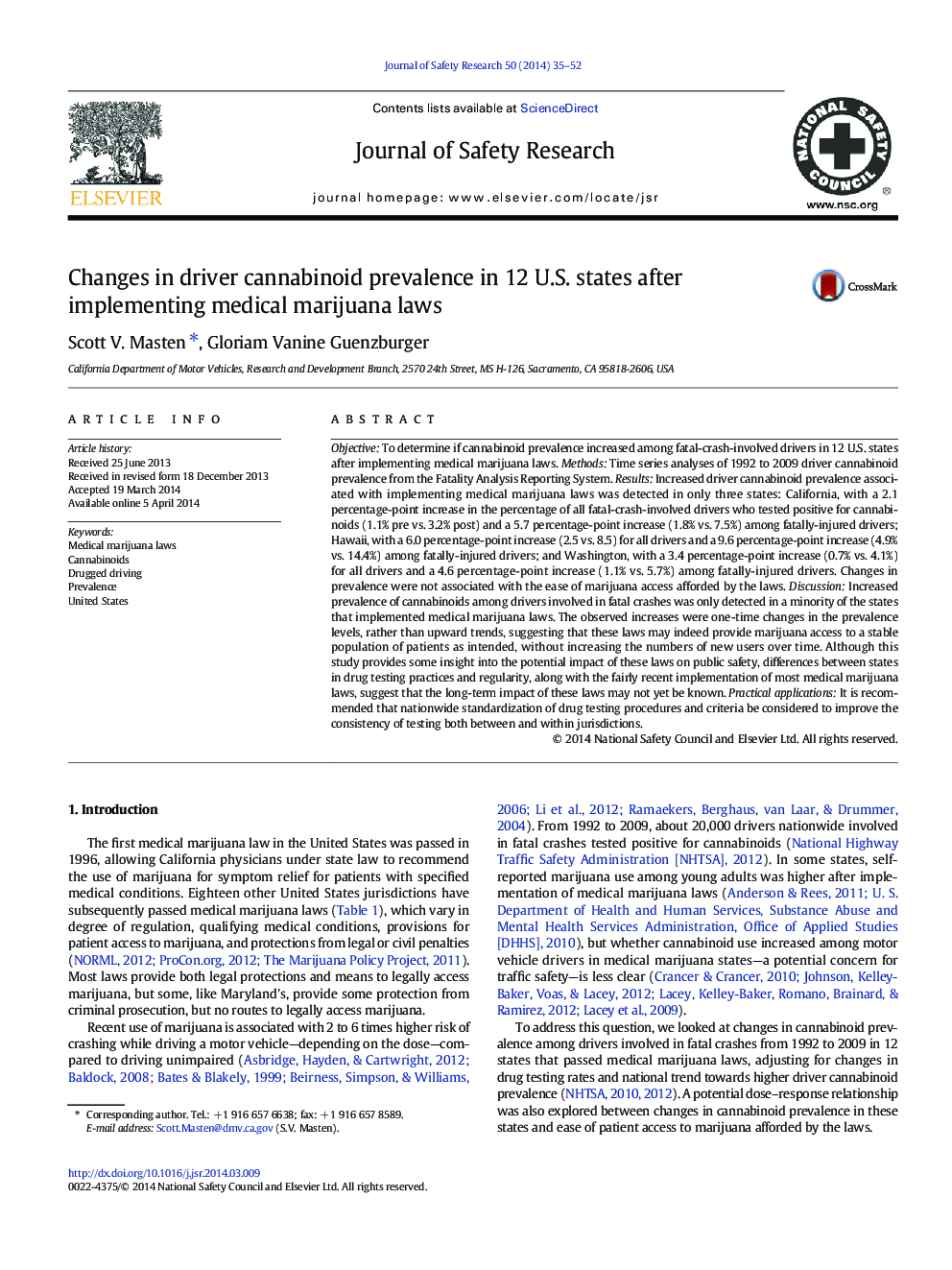| کد مقاله | کد نشریه | سال انتشار | مقاله انگلیسی | نسخه تمام متن |
|---|---|---|---|---|
| 587305 | 1453310 | 2014 | 18 صفحه PDF | دانلود رایگان |
• Increased prevalence of cannabinoids among drivers involved in fatal crashes was only detected in a minority of the states that implemented medical marijuana laws.
• All observed increases were one-time changes in the prevalence, rather than upward trends, suggesting that the laws may not increase the numbers of new users over time.
• The reasons that changes in prevalence were detected in some states but not others are unknown, but differences in state drug testing practices and regularity may play a part.
• Nationwide standardization of drug testing procedures and criteria should be considered to improve the consistency of testing both between and within jurisdictions.
ObjectiveTo determine if cannabinoid prevalence increased among fatal-crash-involved drivers in 12 U.S. states after implementing medical marijuana laws.MethodsTime series analyses of 1992 to 2009 driver cannabinoid prevalence from the Fatality Analysis Reporting System.ResultsIncreased driver cannabinoid prevalence associated with implementing medical marijuana laws was detected in only three states: California, with a 2.1 percentage-point increase in the percentage of all fatal-crash-involved drivers who tested positive for cannabinoids (1.1% pre vs. 3.2% post) and a 5.7 percentage-point increase (1.8% vs. 7.5%) among fatally-injured drivers; Hawaii, with a 6.0 percentage-point increase (2.5 vs. 8.5) for all drivers and a 9.6 percentage-point increase (4.9% vs. 14.4%) among fatally-injured drivers; and Washington, with a 3.4 percentage-point increase (0.7% vs. 4.1%) for all drivers and a 4.6 percentage-point increase (1.1% vs. 5.7%) among fatally-injured drivers. Changes in prevalence were not associated with the ease of marijuana access afforded by the laws.DiscussionIncreased prevalence of cannabinoids among drivers involved in fatal crashes was only detected in a minority of the states that implemented medical marijuana laws. The observed increases were one-time changes in the prevalence levels, rather than upward trends, suggesting that these laws may indeed provide marijuana access to a stable population of patients as intended, without increasing the numbers of new users over time. Although this study provides some insight into the potential impact of these laws on public safety, differences between states in drug testing practices and regularity, along with the fairly recent implementation of most medical marijuana laws, suggest that the long-term impact of these laws may not yet be known.Practical applicationsIt is recommended that nationwide standardization of drug testing procedures and criteria be considered to improve the consistency of testing both between and within jurisdictions.
Journal: Journal of Safety Research - Volume 50, September 2014, Pages 35–52
